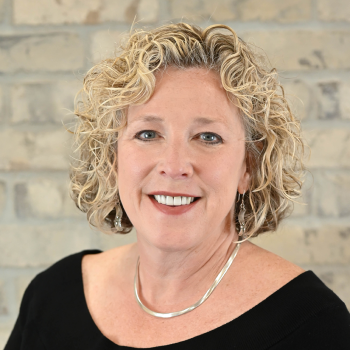Topic(s)
- Business operations improvement
This content will not be available on-demand. Please note: Participants will need a laptop computer that connects to a PUBLIC browser. Please check your computer when it is not on your company's WIFI. Phones and iPads will not work for this simulation.
Overview
InBox® Lean office simulation is a participant-driven simulation that teaches how to apply Lean concepts to transactional processes. With InBox, associates of all levels can practice the tools of Lean and Six Sigma in a risk-free setting. This kind of practice builds individual capability and, ultimately, organizational capability. InBox is unique: it employs an email-based work process, providing first-hand experience with Lean office concepts where the flow of work is essentially invisible.
InBox is built around an electronic workflow, the type of work environment that actually exists in service businesses, support functions of manufacturing enterprises and leadership functions in all organizations. By using an email-based platform, participants assume work roles in an invisible (and very confusing) process. Over the course of the day, associates will work to continuously improve the current state by creating an A3 to identify the problem and then doing follow-up exercises such as developing a value stream map, identifying non-value-added activities (waste) and calculating takt time. We will also apply agile thinking as we improve our work in short, iterative cycles and hold retrospectives to review the improvement process.
Key learning objectives
- Managing horizontal workflow across organizational silos effectively.
- Utilizing lean tools to actively involve participants in change management processes.
- Overseeing rapid cycles of improvement initiatives across various functional areas.
- Implementing huddle boards to oversee daily operations and ongoing improvement efforts.
Interactive components
Participants will assume one of the many roles in the simulation and perform their assigned duties. Between simulation rounds, they will engage directly as an improvement team, creating a value stream map on the wall using flip chart paper and participating in other relevant activities.
Company
MoreSteam provides training and technology to help organizations build operational excellence in everything they do. It integrates Lean methods, Lean Six Sigma, Agile process design and PDCA to provide a flexible set of expert tools supporting enterprise process improvement. Over a half-million professionals and over 50% of Fortune 500 companies have used MoreSteam technologies. The company’s eLearning, training simulations and cloud-based tools, such as EngineRoom data analysis and TRACtion project management software, support “quick hit” process improvements, Kaizen events and complex DMAIC projects in organizations of all sizes. In addition, MoreSteam supplements customers’ resources with master black belts experienced in deployment support, coaching and training simulation facilitation. www.moresteam.com
Presenter
 Peg Pennington champions critical thinking and problem-solving as essential skills for all organizations. With over two decades of experience, she is a dedicated team builder and a passionate advocate for fostering a culture of innovation. Currently serving on the board of directors at LEI (The Lean Enterprise Institute), Pennington actively contributes to conducting research and disseminating practical information that advances Lean thinking and practices. In her role as an educator and process improvement thought leader at MoreSteam, Pennington works closely with global clients to instill a continuous improvement mindset and ignite a passion for problem-solving.
Peg Pennington champions critical thinking and problem-solving as essential skills for all organizations. With over two decades of experience, she is a dedicated team builder and a passionate advocate for fostering a culture of innovation. Currently serving on the board of directors at LEI (The Lean Enterprise Institute), Pennington actively contributes to conducting research and disseminating practical information that advances Lean thinking and practices. In her role as an educator and process improvement thought leader at MoreSteam, Pennington works closely with global clients to instill a continuous improvement mindset and ignite a passion for problem-solving.
Before her tenure with MoreSteam’s executive team, Pennington held the position of executive director at the Center for Operational Excellence. There, she was instrumental in developing the Master of Business Operational Excellence (MBOE) program and setting high standards for Lean Six Sigma certification in line with industry norms. Pennington also imparted her knowledge as an instructor in both the MBOE and MBA programs at Ohio State’s Fisher College of Business.
She has a bachelor’s degree in finance from Michigan State University and an MBA from the University of Dayton. 
 Ken Robinette joined MoreSteam in July of 2023 as the vice president of business development and is responsible for developing, executing, and overseeing a business strategy that prioritizes growth and positive customer ratings. He has over 30 years of business experience in various markets and functional roles, including sales, design, production management, and process improvement. Prior to joining MoreSteam, Robinette spent over 18 years in the healthcare industry, working at Cardinal Health and Scapa Healthcare. He is trained and certified in the Danaher Business System by Shingjutsu Kaizen and in Six Sigma by General Electric.
Ken Robinette joined MoreSteam in July of 2023 as the vice president of business development and is responsible for developing, executing, and overseeing a business strategy that prioritizes growth and positive customer ratings. He has over 30 years of business experience in various markets and functional roles, including sales, design, production management, and process improvement. Prior to joining MoreSteam, Robinette spent over 18 years in the healthcare industry, working at Cardinal Health and Scapa Healthcare. He is trained and certified in the Danaher Business System by Shingjutsu Kaizen and in Six Sigma by General Electric.
He has a B.S. in aerospace technology from Kent State and an M.B.A. in operations management and quality from the Illinois Institute of Technology. 




